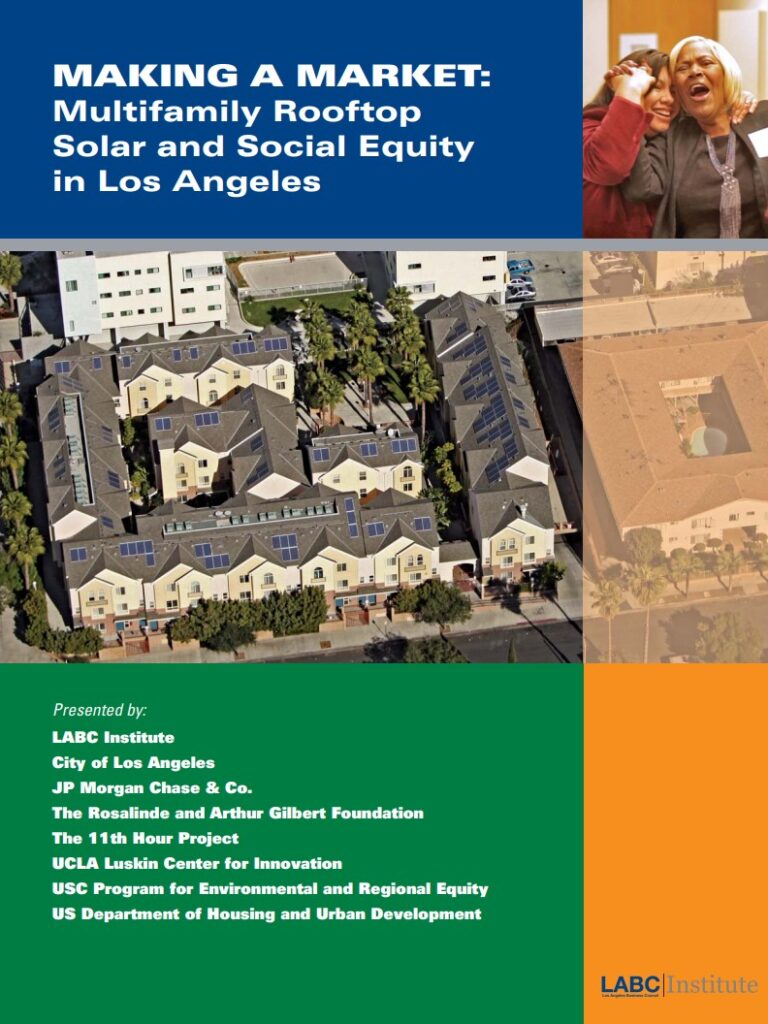
By: JR DeShazo, Director, UCLA Luskin Center for Innovation; Manuel Pastor, Director, USC Program for Environmental and Regional Equity (USC PERE); Mirabai Auer, USC PERE; Vanessa Carter, USC PERE; Nicholas Vartanian, UCLA Luskin Center for Innovation
April 2011
Please note: reports dated earlier than June 2020 were published under our previous names: the USC Program for Environmental and Regional Equity (PERE) or the USC Center for the Study of Immigrant Integration (CSII).
The story goes that solar panels are a luxury available to affluent single-family home owners or by economies-of-scale at commercial and government sites. Turns out that the story isn’t quite right: Across Los Angeles, multifamily buildings where tenants are renters—often lower-income renters – have high solar potential. Tapping underutilized rooftop assets in this market could add over 1.4 mW of sustainable energy, thereby both greening the region and the wallets of economically distressed communities.
In Making a Market: Multi-Family Rooftop Solar and Social Equity in Los Angeles (link), PERE and UCLA’s Luskin Center for Innovation, examine how a solar energy program could be designed in a way to ensure that lower-income Angelenos benefit, too. Using mapping technology, the research team pinpoints LA neighborhoods with both high solar potential and high economic need. Resulting policy suggestions include creating a solar Feed-In-Tariff program or increasing net-metering programs for multi-family buildings.
The executive summary was released at the Los Angeles Business Councils’ annual Sustainability Summit held at the Getty Center on April 12, 2011 to an audience of local government officials, policy makers, and non-profits. A full version of the report will be released in June.



